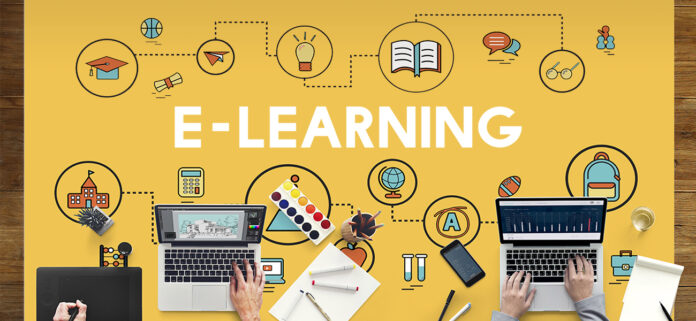If you’re a parent, guardian, or educator looking for ways to enhance your child’s development while also promoting outdoor play and environmental awareness, then this blog post is for you! Natural playground equipment has been gaining popularity in recent years as an alternative to traditional plastic play structures. Not only are these eco-friendly options better for the environment, but they also provide countless benefits for children’s physical, cognitive and social-emotional development. In this article, we’ll explore some of the many advantages that natural playgrounds have to offer and why they should be considered when building or updating a playground space. Get ready to discover how nature-inspired play can help your child grow into a healthy and well-rounded individual!
Table of Contents
What is Natural Playground Equipment?
Natural playground equipment is designed to encourage children to explore, play and discover in a natural environment. It can include features such as trees, logs, rocks, water and sand, which all provide opportunities for children to use their imagination and learn new physical skills.
There are many benefits of natural playgrounds for child development, including:
Physical Development – Natural playgrounds encourage active play, which is essential for healthy physical development. Children can climb, jump, balance and run around, all while getting fresh air and exercise.
Cognitive Development – Exploring a natural environment helps children develop important problem-solving and critical thinking skills. They learn how to navigate their surroundings, figure out how things work and solve problems on their own.
Creativity and Imagination – When children are given the freedom to play in a natural setting, they can let their imaginations run wild. They can pretend they’re on an adventure or invent games with their friends. This type of play fosters creativity and imagination.
social skills – Playing in a group helps children develop important social skills such as communication, cooperation and sharing. They learn how to interact with others and work together towards a common goal.
Benefits of Natural Playground Equipment for Students
Children who play on natural playground equipment have better fine and gross motor skills, are more likely to be active, and have improved social skills. Natural playgrounds also encourage creativity, imagination, and problem-solving.
How to Design an Effective Natural Playground
An effective natural playground should provide opportunities for children to explore, experiment, and engage in physical activity. It should also be safe and stimulating, with a variety of features that encourage different types of play. Here are some tips for designing an effective natural playground:
- Make sure the playground is age-appropriate. The features and activities offered should be appropriate for the ages of the children who will be using the playground.
- Incorporate a variety of elements. A natural playground should include a mix of natural and man-made features, such as trees, rocks, sand, water, and equipment designed for climbing, swinging, and sliding.
- Encourage exploration and discovery. The playground should offer opportunities for children to explore their surroundings and discover new things. For example, it could include hidden nooks and crannies, or secret passages behind bushes or trees.
- Promote physical activity. The playground should be designed to encourage active play, with plenty of space for running around and playing games. It could also include fitness equipment such as monkey bars or balance beams.
- Keep it safe. Safety is paramount when designing any playground, but it’s especially important in a natural setting where there may be uneven surfaces or hidden hazards. Make sure the playground is well-maintained and free of potential hazards such as sharp objects or poisonous plants.
Examples of Natural Playground Structures
Ther are many benefits to using natural playground structures for child development. Here are some examples:
- Natural playgrounds encourage active play.
Children are naturally drawn to playing in nature, and natural playgrounds provide opportunities for them to explore and be physically active. Research has shown that children who play in natural environments are more likely to be physically active than those who don’t.
- Natural playgrounds promote cognitive development.
Playing in nature helps children develop important cognitive skills such as problem solving, critical thinking, and creative thinking. Children who play in natural playgrounds have been shown to score higher on tests of these skills than those who don’t.
- Natural playgrounds improve social skills.
Playing in nature gives children the opportunity to interact with other children and adults in a positive way. They learn how to share, take turns, and cooperate with others. These social skills are important for success in school and in life.
Resources for Further Reading
There are many books and articles written on the subject of natural playgrounds and their benefits for child development. A few of these resources are listed below:
-Natural Playgrounds (Chapman & Hall, 1996) by Simon Barnes
-The Nature Principle: Reconnecting with Life in a Virtual Age (Algonquin Books, 2011) by Richard Louv
-Last Child in the Woods: Saving Our Children From Nature-Deficit Disorder (Algonquin Books, 2005) by Richard Louv
-Your Child’s Nature: Nurturing Their Innate Sense of Wonder and Joy (Avery, 2006) by Michael J. Sankey
Conclusion
Natural playground equipment offers a unique and beneficial way for children to play and learn. It encourages creative, imaginative play while fostering physical, cognitive and social development. Not only does it encourage active engagement in the natural environment, but it also provides many opportunities for learning about nature. With its numerous benefits, natural playgrounds are an ideal option when planning out your local park or school playground design.
